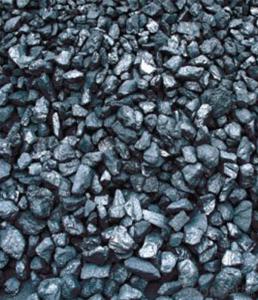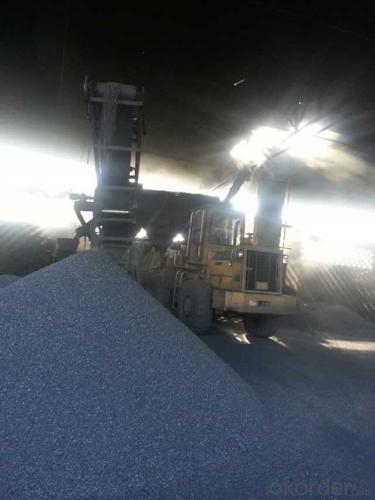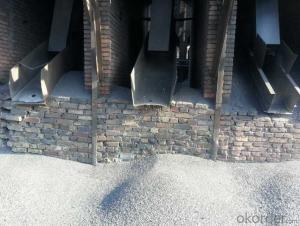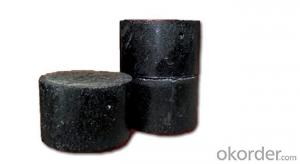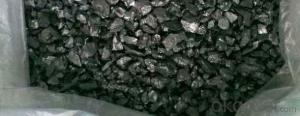FC Content 90%-95% Calcined Anthracite
- Loading Port:
- China Main Port
- Payment Terms:
- TT or LC
- Min Order Qty:
- -
- Supply Capability:
- -
OKorder Service Pledge
OKorder Financial Service
You Might Also Like
FC Content 90%-95% Calcined Anthracite
Product Description:
After many years' research and according to customers' use experience, FSK Carbon additive has gained the features of high carbon, low sulfur, low nitrogen and less impurities. FSK carbon additive can be used in the steel casting to promote the steel quality in steel-melting, now this product is widely used in foundry plants, brake pads and rub material produce scopes .
Specification as follows:

Above grain size is our standard recommendation, if you have any special requirement, pls contact with duratight freely.
1/for normal steel,we recommend DT-CA-10 for you, Fixed carbon(max):95%,sulfur(max):0.3%
2/ for low Nitrogen steel, Steel cord ,high strength wire-steel,we recommend DT-CA-06, DT-CA-07,DT-CA-08,DT-CA-09.
Packing and delivery details:
1.Waterproof ton bags(without small bags inside )
2.20kgs/25kgs paper bags, 40 bags on one pallet or in one MT-bag
3.20kgs/25kgs/30kgs waterproof PP Woven bags ,990kgs on one pallet or in one MT-bag
Above packing is our standard packing, if you have special requirement about the packing, pls contact with us freely.
Pictures:
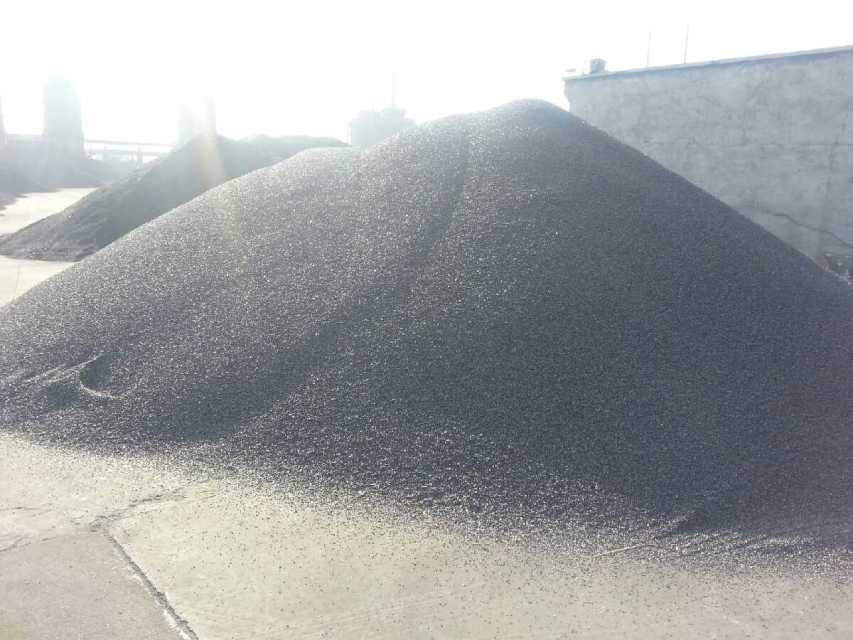
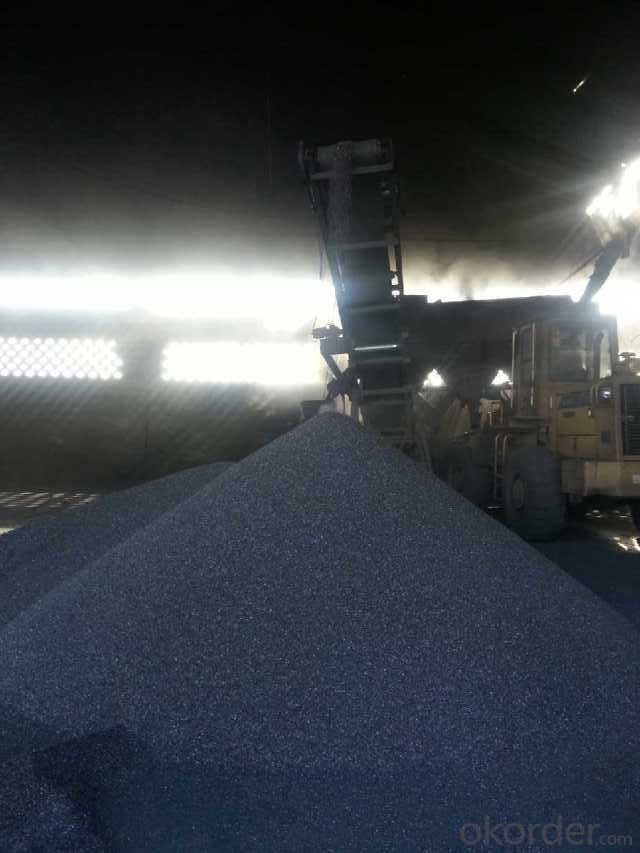


- Q: How does carbon dating work?
- The age of organic materials, such as plants, animals, and human remains, can be determined through the scientific technique known as carbon dating. This method relies on the continuous formation of carbon-14, a radioactive isotope of carbon, in the atmosphere due to cosmic rays. Carbon-14 is absorbed by living organisms through photosynthesis or consumption. The ratio of carbon-14 to stable carbon isotopes (carbon-12 and carbon-13) in the atmosphere remains relatively constant as living organisms maintain equilibrium by exchanging carbon-14 with the atmosphere through respiration or consumption. However, when an organism dies, it no longer takes in carbon-14, leading to the decay of existing carbon-14 at a predictable rate. Carbon-14 has a half-life of approximately 5,730 years, meaning that after this period, half of the carbon-14 in a sample will have transformed into nitrogen-14. By measuring the remaining carbon-14 in a sample, scientists can calculate the time that has passed since the organism's death. The carbon dating process involves several steps. Initially, a sample is collected from the organic material to be dated, which can include wood, bones, or textiles. The sample is then prepared for analysis by eliminating any impurities and converting it into a suitable form for measurement. Subsequently, the sample is exposed to a high-energy radiation source, such as a particle accelerator or a nuclear reactor. This exposure causes the carbon atoms in the sample to emit beta particles, which are small bursts of energy. These particles are detected and measured using sensitive instruments, enabling scientists to determine the remaining amount of carbon-14 in the sample. Finally, this information is utilized to calculate the age of the organic material. By comparing the ratio of carbon-14 to carbon-12 in the sample to the known ratio in the atmosphere, scientists can estimate the elapsed time since the organism's death. Carbon dating is an invaluable tool for archaeologists, paleontologists, and geologists. It allows for the accurate determination of the ages of ancient artifacts, fossils, and geological formations. This technique has revolutionized our understanding of human history and the natural world, providing us with invaluable insights into the past.
- Q: How does carbon contribute to the strength of concrete?
- There are several ways in which carbon can contribute to the strength of concrete. One primary method involves the utilization of carbon nanotubes (CNTs) or carbon fibers. These substances are added to the concrete mixture to act as reinforcement and enhance its mechanical properties. Incorporating CNTs or carbon fibers into the concrete results in the formation of a network consisting of small, sturdy, and lightweight particles. This network serves to enhance the overall strength and durability of the concrete, making it more resistant to cracking, flexing, and other types of structural damage. Furthermore, the carbon particles also improve the bonding between the cement paste and the aggregates in the concrete. This improved bonding increases the strength at the interface, resulting in a more cohesive and robust concrete matrix. Moreover, carbon can also contribute to the strength of concrete by acting as a pozzolan. Pozzolans are materials that undergo a chemical reaction with calcium hydroxide, a byproduct of cement hydration, to form additional cementitious compounds. These compounds fill in the gaps between cement particles, leading to a denser and stronger concrete structure. Carbon black, which is a finely divided form of carbon, is commonly used as a pozzolan in concrete mixtures. Overall, the incorporation of carbon in concrete, whether through carbon nanotubes, carbon fibers, or as a pozzolan, can significantly enhance its strength and performance. By reinforcing the concrete matrix, improving bonding, and filling in gaps, carbon helps create a more durable and robust material suitable for various construction applications.
- Q: What is the role of carbon 60 in industry? Can it be interchanged with the chemical properties of carbon? What is the chemical structure of carbon 60?
- Used to strengthen metals; used as a new catalyst for storage of gases
- Q: How does carbon impact the acidity of rainfall?
- Carbon does impact the acidity of rainfall through a process known as acid rain. When carbon dioxide (CO2) is released into the atmosphere, it combines with water (H2O) and forms carbonic acid (H2CO3). This reaction occurs naturally, but human activities such as burning fossil fuels and industrial processes have significantly increased the amount of carbon dioxide in the atmosphere. When carbonic acid is formed, it can react with other compounds in the air, such as sulfur dioxide (SO2) and nitrogen oxides (NOx), to form even stronger acids like sulfuric acid (H2SO4) and nitric acid (HNO3). These acids then dissolve in rainwater, forming acid rain. The presence of carbon in the atmosphere contributes to the overall acidity of rainfall. Acid rain has detrimental effects on the environment, ecosystems, and human health. It can damage forests, lakes, and rivers, leading to the depletion of fish populations and the destruction of habitats. Acid rain can also erode buildings and monuments, corrode metals, and harm crops. The impacts of carbon on the acidity of rainfall highlight the importance of reducing carbon emissions and addressing climate change. By transitioning to cleaner energy sources, implementing sustainable practices, and reducing our carbon footprint, we can help mitigate the acidity of rainfall and minimize the negative consequences associated with acid rain.
- Q: What are the challenges of carbon capture and storage technology?
- Carbon capture and storage (CCS) technology is a promising solution to mitigate greenhouse gas emissions and combat climate change. However, there are several challenges that need to be addressed for its widespread adoption and effectiveness. One of the major challenges of CCS technology is its high cost. Implementing CCS requires significant investments in infrastructure, equipment, and operations, making it economically burdensome. The capture process itself requires large amounts of energy, leading to increased costs and potentially limiting its viability. Another challenge is the limited storage capacity. Finding suitable underground storage sites for the captured carbon dioxide (CO2) is crucial, but it can be challenging due to geological constraints. Identifying and assessing suitable sites with adequate storage capacity is a complex task that requires careful planning and evaluation. Furthermore, there are concerns regarding the long-term stability and integrity of the storage sites. Leakage of stored CO2 could compromise the effectiveness of CCS and pose environmental risks. Ensuring the safe and secure storage of captured carbon is essential to prevent any negative impacts on ecosystems and public health. The transportation of captured CO2 from the capture sites to the storage facilities is also a challenge. Building an efficient and extensive transportation infrastructure is necessary for the large-scale deployment of CCS technology. Developing pipelines or other means of transportation that can handle the volume of captured CO2 and ensuring its safe transport over long distances is crucial. Public acceptance and social factors also play a significant role in the challenges of CCS technology. There can be concerns and resistance from local communities regarding potential risks associated with the capture, transport, and storage of CO2. Addressing these concerns through effective communication, transparency, and engagement with stakeholders is vital to gain public support and minimize opposition. Overall, carbon capture and storage technology holds great potential for reducing greenhouse gas emissions. However, its challenges, such as high costs, limited storage capacity, integrity concerns, transportation infrastructure, and public acceptance, need to be addressed to ensure its successful implementation and contribute significantly to mitigating climate change.
- Q: Carbon emissions trading stocks latest list of carbon emissions trading stocks what?
- Carbon trading concept of a total of 21 listed companies, of which 12 carbon trading concept listed companies trading on the Shanghai Stock Exchange, and 9 other carbon trading concept listed companies trading in the Shenzhen stock exchange.Automatic matching based on the cloud financial leading excavator, carbon trading stocks leading shares most likely from the following stock was born in Tianke, electrical, environmental protection up to confidence.
- Q: Carbon fiber refractory?
- 3, pre oxidized carbon fiber cloth, can withstand 200--300 degrees of high temperature
- Q: What is carbon capture and storage?
- Carbon capture and storage (CCS) is a technology that aims to reduce carbon dioxide (CO2) emissions from industrial processes, power plants, and other significant sources. It involves capturing CO2 emissions before they are released into the atmosphere, transporting the captured CO2, and securely storing it underground. The process of carbon capture typically involves using specialized equipment to capture CO2 from flue gases or other industrial processes. This captured CO2 is then compressed and transported via pipelines or ships to a suitable storage site. The storage site is typically located deep underground, where the CO2 is injected into geological formations such as depleted oil and gas fields, saline aquifers, or deep coal seams. The storage of CO2 underground is done in a way that ensures its long-term containment and minimizes the risk of leakage. This can involve using various techniques, such as monitoring the storage site for any signs of leakage, ensuring the integrity of the storage infrastructure, and selecting suitable storage sites with geological features that contribute to the long-term containment of CO2. Carbon capture and storage has the potential to significantly reduce CO2 emissions and help mitigate climate change. By capturing and storing CO2 rather than releasing it into the atmosphere, the technology allows industries to continue using fossil fuels while minimizing their environmental impact. It can be particularly beneficial for industries that are difficult to decarbonize, such as cement production, steel manufacturing, and natural gas power plants. While carbon capture and storage is a promising technology, there are still challenges and limitations to its widespread deployment. One major challenge is the high cost associated with implementing CCS infrastructure and operations. Additionally, finding suitable storage sites and addressing public concerns about the safety and environmental impact of injecting CO2 underground can also pose significant obstacles. Despite these challenges, carbon capture and storage is considered an essential tool in the fight against climate change. It can play a crucial role in achieving global emission reduction targets and transitioning to a low-carbon economy. As technology continues to advance and costs decrease, the widespread adoption of carbon capture and storage may become increasingly feasible and necessary.
- Q: What are the effects of carbon emissions on the stability of grasslands?
- Carbon emissions have a significant impact on the stability of grasslands. One of the main effects is the alteration of the climate, specifically through the greenhouse effect. Carbon dioxide (CO2) is a major greenhouse gas, and the increased concentration of CO2 in the atmosphere leads to global warming. This rise in temperature affects grasslands by altering their natural growth patterns and disrupting the delicate balance of their ecosystems. Higher temperatures caused by carbon emissions can lead to increased evaporation rates, resulting in drier soil conditions. Grasslands are adapted to specific moisture levels, and any changes in these conditions can lead to reduced plant growth and increased susceptibility to drought. As a consequence, grasslands become less stable and more prone to desertification. Moreover, elevated levels of carbon dioxide can affect the nutritional quality of grasses. As CO2 concentrations increase, the relative proportion of essential nutrients in grasses may decrease. This phenomenon, known as nutrient dilution, can impact the health and productivity of herbivores that rely on these grasslands for sustenance. The decline in nutritional value can disrupt the delicate balance of predator-prey relationships and lead to a decline in biodiversity. Additionally, carbon emissions contribute to the acidification of soils. Increased carbon dioxide dissolves in rainwater, forming carbonic acid, which lowers the pH of the soil. Grasses are sensitive to changes in soil pH, and acidification can negatively affect their growth and nutrient uptake. Acidic soil conditions can also lead to the loss of important microorganisms that contribute to a healthy soil ecosystem, further destabilizing grasslands. Lastly, carbon emissions have indirect effects on grasslands through climate change-induced alterations in precipitation patterns. Changes in rainfall patterns can lead to shifts in plant composition and distribution, favoring invasive species or altering the competitive balance between different grass species. This can disrupt the stability and functioning of grassland ecosystems. In conclusion, carbon emissions have numerous detrimental effects on the stability of grasslands. These include changes in climate, increased vulnerability to drought, nutrient dilution, soil acidification, and alterations in precipitation patterns. It is crucial to reduce carbon emissions and mitigate the impacts of climate change to preserve the stability and integrity of grassland ecosystems.
- Q: Can carbon in barbecue cause cancer? Can carbonated food cause cancer?
- Eat barbecue are carcinogenic, because the meat directly on the heat under the grill, the decomposition of fat droplets in the charcoal, and then with the meat proteins, it will produce a carcinogen called benzopyrene. Experts explained that if people regularly eat food contaminated by benzopyrene, carcinogens can accumulate in the body and cause stomach cancer and bowel cancer.
Send your message to us
FC Content 90%-95% Calcined Anthracite
- Loading Port:
- China Main Port
- Payment Terms:
- TT or LC
- Min Order Qty:
- -
- Supply Capability:
- -
OKorder Service Pledge
OKorder Financial Service
Similar products
Hot products
Hot Searches
